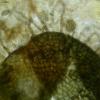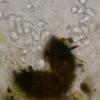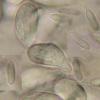
12-12-2025 18:39
Mirek GrycHello everyone.Macrofeatures similar to Mollisia b

09-12-2025 12:06
 Andgelo Mombert
Andgelo Mombert
Bonjour,Je recherche l'article concernant Hypobryo

07-12-2025 16:07
Arnold BüschlenHallo, ich habe in einer Moos-Aufsammlung (epiphy

08-12-2025 21:04
Mark Stevens"Hello everyone,I'm relatively new to microscopy (

08-12-2025 18:59
 Lothar Krieglsteiner
Lothar Krieglsteiner
.. found by a seminar-participant, I do not know t

08-12-2025 17:37
 Lothar Krieglsteiner
Lothar Krieglsteiner
20.6.25, on branch of Abies infected and thickened

16-03-2014 22:00
Hello,I found this species a few months ago but ha

08-12-2025 13:39
Thomas Læssøehttps://svampe.databasen.org/observations/10572899
Minute pyrenomycete on Olea leaves
Hans-Otto Baral,
12-02-2009 22:01
 Today I received from Pablo fresh Lambertella on Olea leaves, and during study I discovered a very small pyrenomycete. Any idea?
Today I received from Pablo fresh Lambertella on Olea leaves, and during study I discovered a very small pyrenomycete. Any idea?Perith. 70 µm diam, globose, black, with some dark brown short stiff setae around the ostiole which I did not see. Asci *14-19 x 7.7-8.5 µm, 8sp., hardly any vacuole water around, IKI-, thin-walled all over (also in dead state). Sp. *7.5-9 x 2.3-2.5 µm, 1-septate, eguttulate.
Zotto
Hans-Otto Baral,
12-02-2009 22:03
Jean-Pierre Lafont,
13-02-2009 00:12
Re:Minute pyrenomycete on Olea leaves
Hello Zotto
Were the ascomas surrounded by spots of a black powdery coating? Actually it looks like a "sooty mould". The size of the ascostromata , the 1-septate hyaline ascospopres and the presence of hyphal appendages are suggestive of family Antennulariellaceae. Usually, in mature ascospores, one of the sister cells is broader than the other one, which seems to be the case for at least one of the spores of your Figure 3. Unfortunately, the literature on this group is scarce, dated and difficult to find. See Hughes, 1976, Mycologia LXVIII, 693-821. I am anything but an expert of this group, and this is only a suggestion...
Sincerely
Jean-Pierre
Were the ascomas surrounded by spots of a black powdery coating? Actually it looks like a "sooty mould". The size of the ascostromata , the 1-septate hyaline ascospopres and the presence of hyphal appendages are suggestive of family Antennulariellaceae. Usually, in mature ascospores, one of the sister cells is broader than the other one, which seems to be the case for at least one of the spores of your Figure 3. Unfortunately, the literature on this group is scarce, dated and difficult to find. See Hughes, 1976, Mycologia LXVIII, 693-821. I am anything but an expert of this group, and this is only a suggestion...
Sincerely
Jean-Pierre
Hans-Otto Baral,
13-02-2009 00:25

Re:Minute pyrenomycete on Olea leaves
Dear Jean-Pierre
The Antennulariellaceae, hug, belong in the Capnodiales, Dothideomycetes, according to Eriksson's Outline of genera. I know quite well the fact that species with bitunicate asci often have such asymmetrical spores with the upper cell broader. But here I had the feeling they are very much equal, and the asci are really thin-walled. Maybe the one spore looks asymmetrical because it lies oblique and is only partly sharp. But let us see the opinion of others.
thanks
Zotto
The Antennulariellaceae, hug, belong in the Capnodiales, Dothideomycetes, according to Eriksson's Outline of genera. I know quite well the fact that species with bitunicate asci often have such asymmetrical spores with the upper cell broader. But here I had the feeling they are very much equal, and the asci are really thin-walled. Maybe the one spore looks asymmetrical because it lies oblique and is only partly sharp. But let us see the opinion of others.
thanks
Zotto


